Gram Negative Enteric Rods
1/30
There's no tags or description
Looks like no tags are added yet.
Name | Mastery | Learn | Test | Matching | Spaced |
|---|
No study sessions yet.
31 Terms
4 major pathogenic enteric rods
Escherichia
Shigella
Salmonella
Vibrio
Family Enterobacteriaceae are Gram ____
negative
Describe "HOK" antigenic typing

Soe diseases caused by normal flora strains of E. coli that escape the intestinal tract and colonize other body sites
UTIs
Invasive disease like septicemia and neonatal meningitis
Diseases caused by strains that have acquired additional virulence factors such as enterotoxins, fimbriae, invasive factors, or "new" animal strains of E. Coli
gastroenteritis
transmission of E.coli
fecal-oral with additional virulence factors like plasmids or phage
Toxin of E. coli
LPS - endotoxin
potent trigger of inflammation
important in sepsis and meningitis
Describe E. coli Enterotoxins
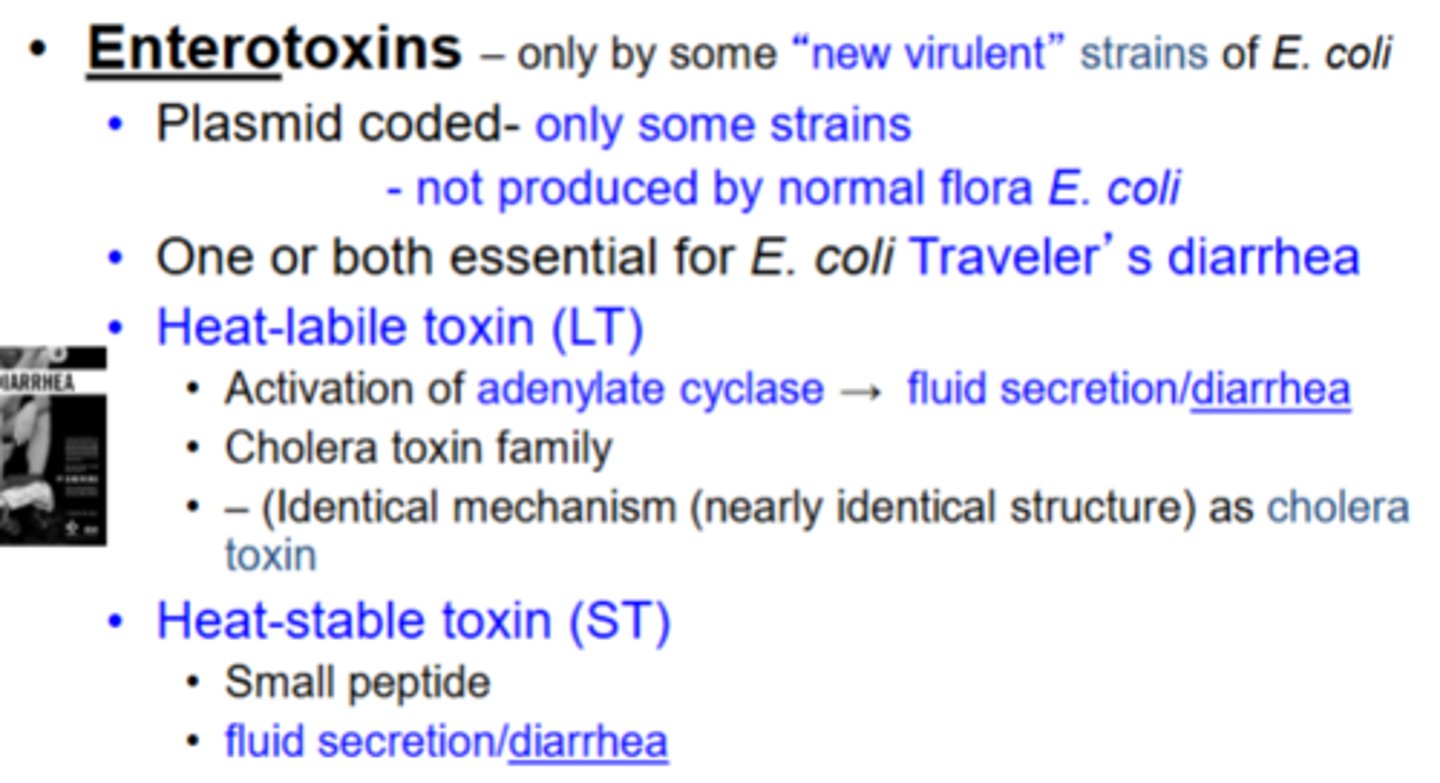
Describe route of E. coli in UTIs
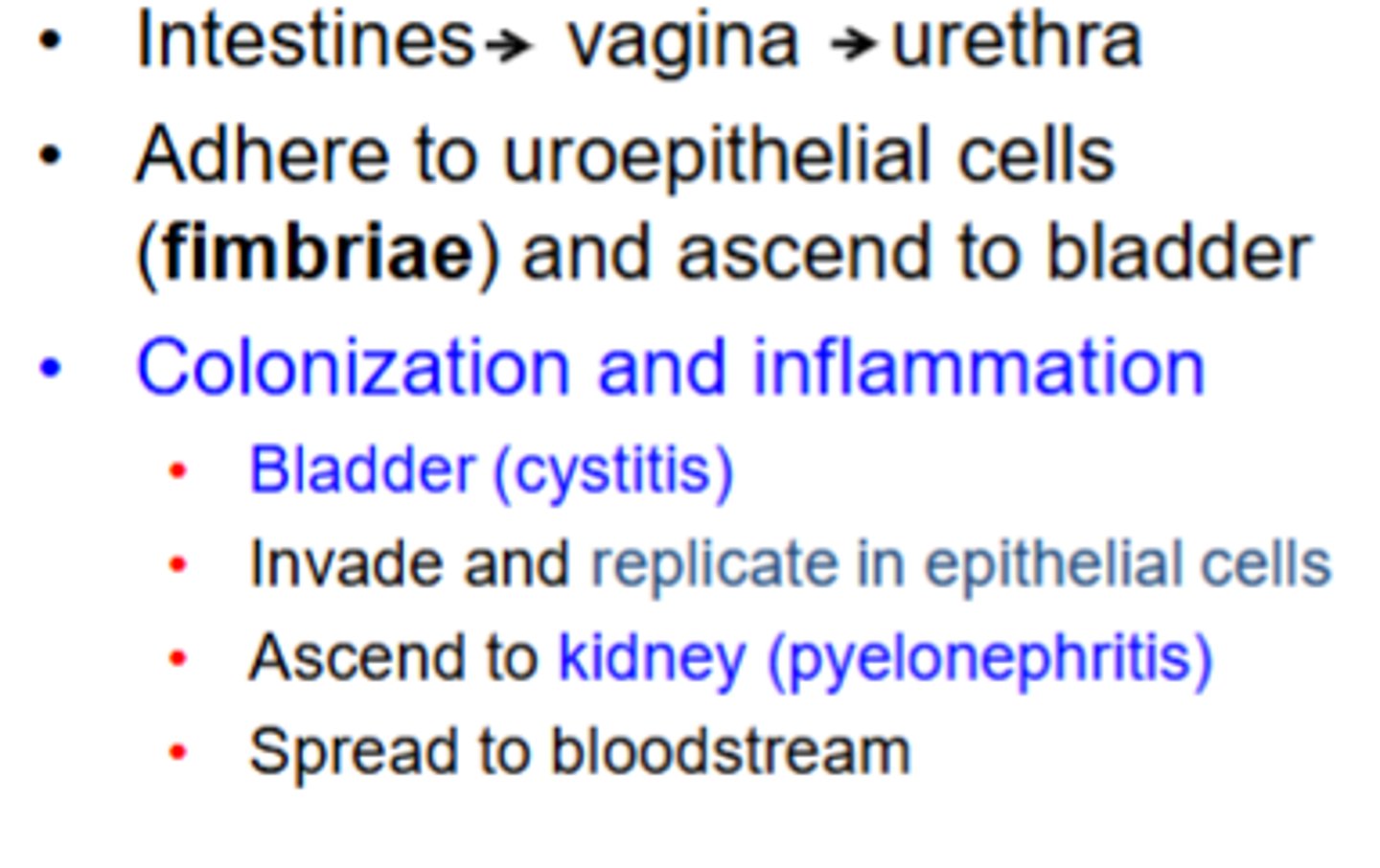
Describe how E. Coli mount invasive infections to cause neonatal meningitis

Describe E. coli invasive infections

Shigella is a lot like E. coli with a virulence ____ that allows cell invasion, and ____ growth. However, it is not___ ____
plasmid; intracellular; normal floral
What organism causes dysentery
S. dysenteriae
milder disease of dysentery more common in the US
shigellosis
what does the shigella virulence plasmid do
encodes proteins for attachment/entry into intestinal epithelial cells
describe Shiga toxin
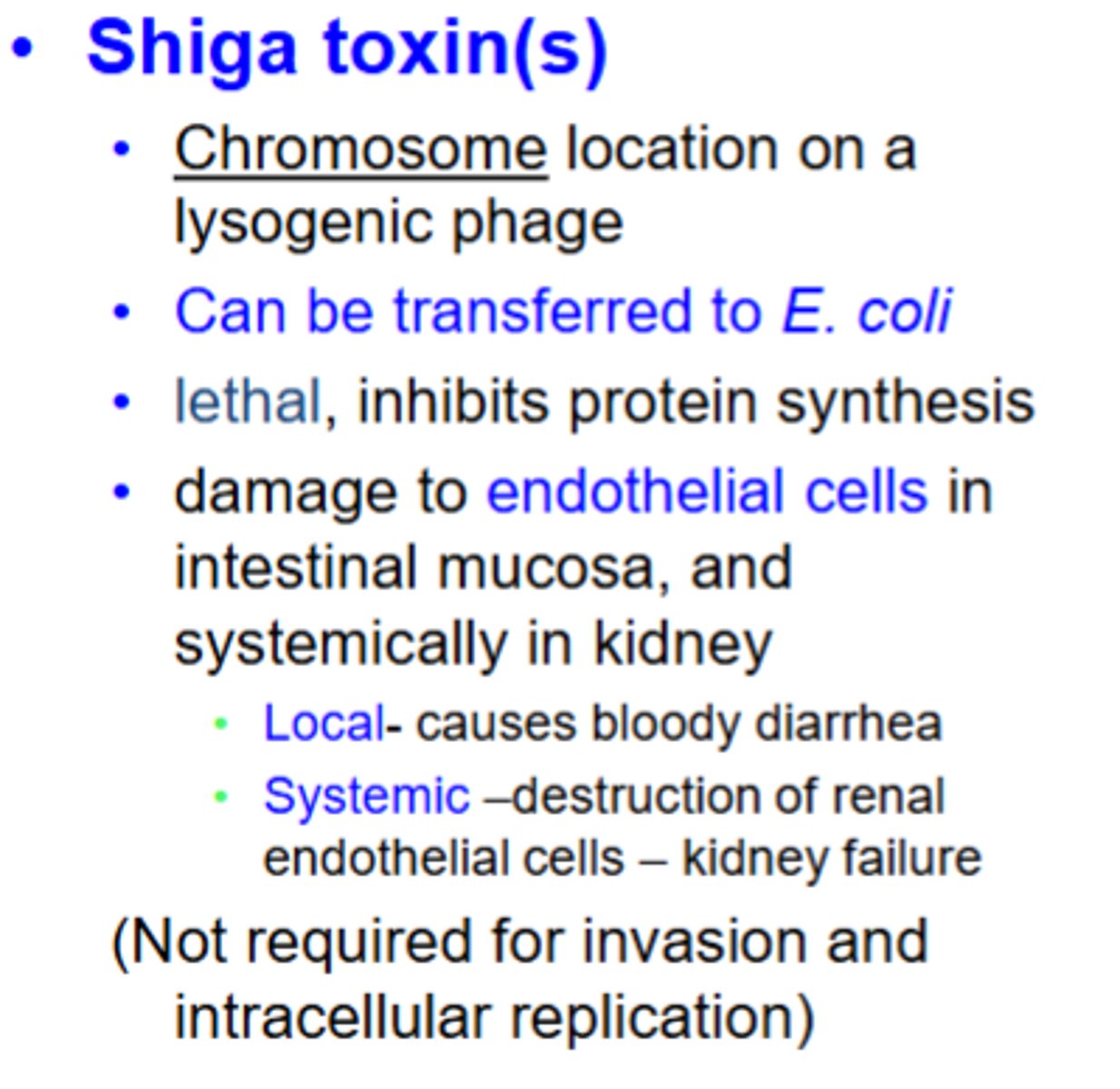
mechanism and symptoms of bacterial dysentery
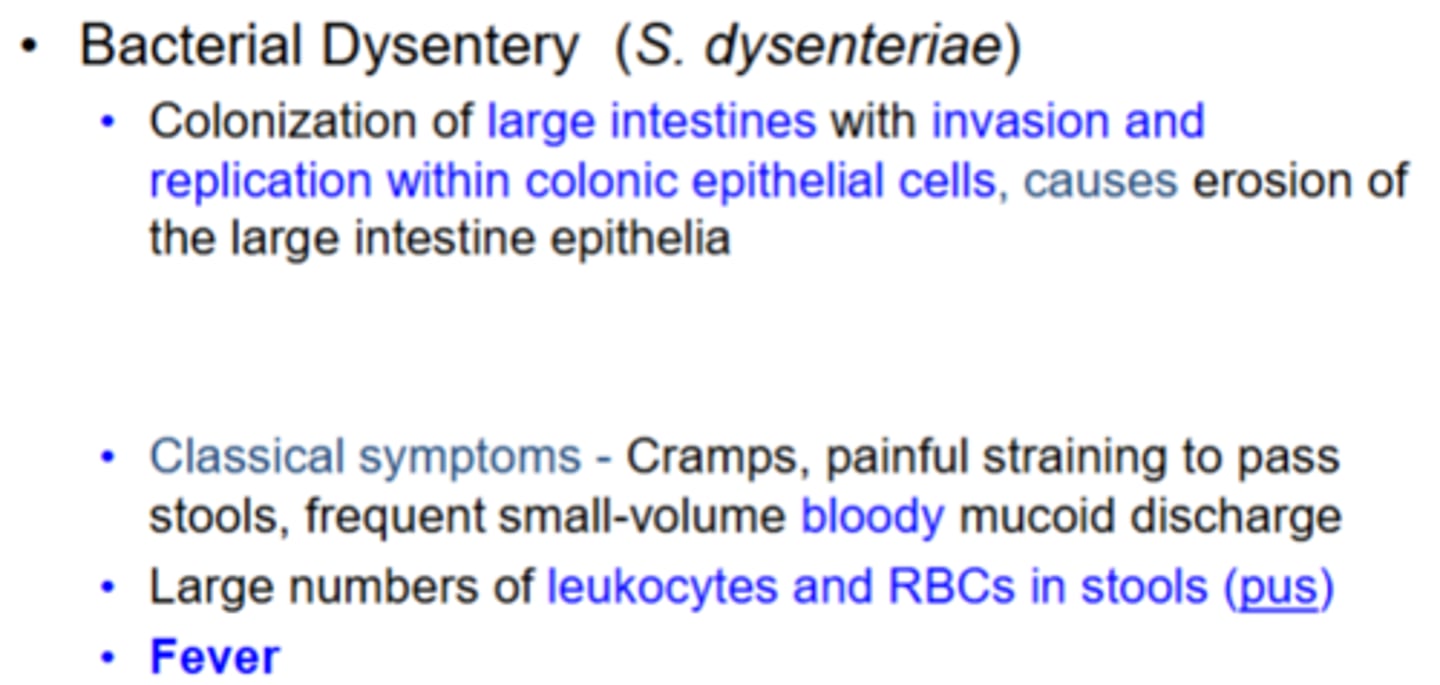
IS salmonella normal flora?
no
2 very different diseases caused by Salmonella
food poisoning and typhoid fever
most common Salmonella infection in the US. It is a disease of ____ ___ with ____ ____ ____
gastroenteridis; indistrialized societies; improper food handling
Typhoid fever is invasive ____-organ and ___ is the USA
multi; rare
Describe the mechanism of Salmonella gastroenteritis serotype Typhimurium
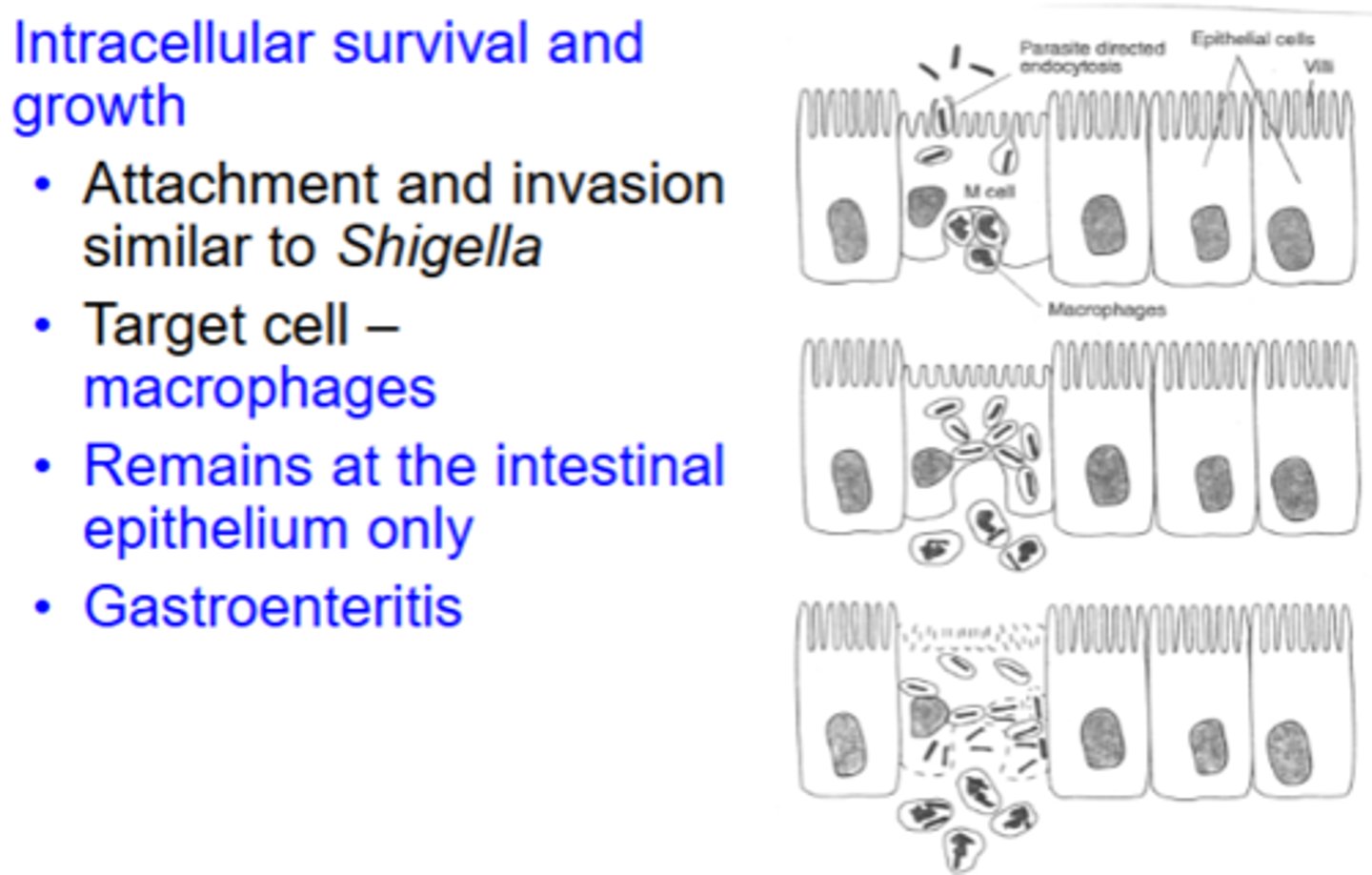
Describe virulence factors of S. Typhi

Two types of current vaccines for systemic S. Typhi food poisoning
1 - purified Vi capsule polysaccharide
2 - Live attenuated Ty 21a strain
Describe the morphology of Vibrio cholera
curved, gram-negative rods with single polar flagella
Describe the morphology and habitat of the genus vibrio
Environmental habitat, particularly warm estuary water with fecal pollution, concentrates within shellfish, such as oysters
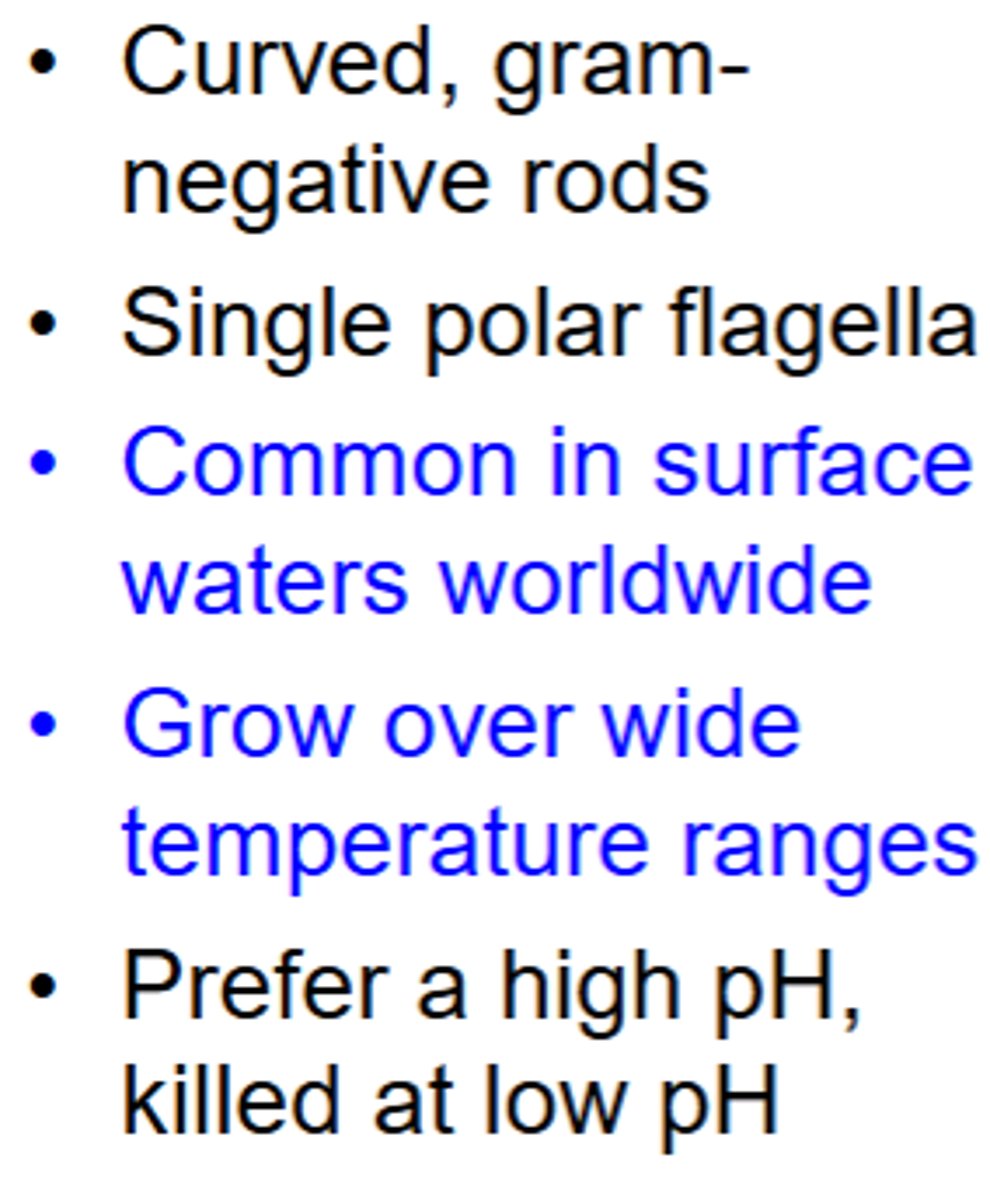
cholera enterotoxin chemically modifies ____ _____
adenylate cyclase
Disease symptoms of cholera are ___ and ___ dependent, varying from no disease to severe disease
dose; host
Describe the clinical manifestations and pathology of cholera
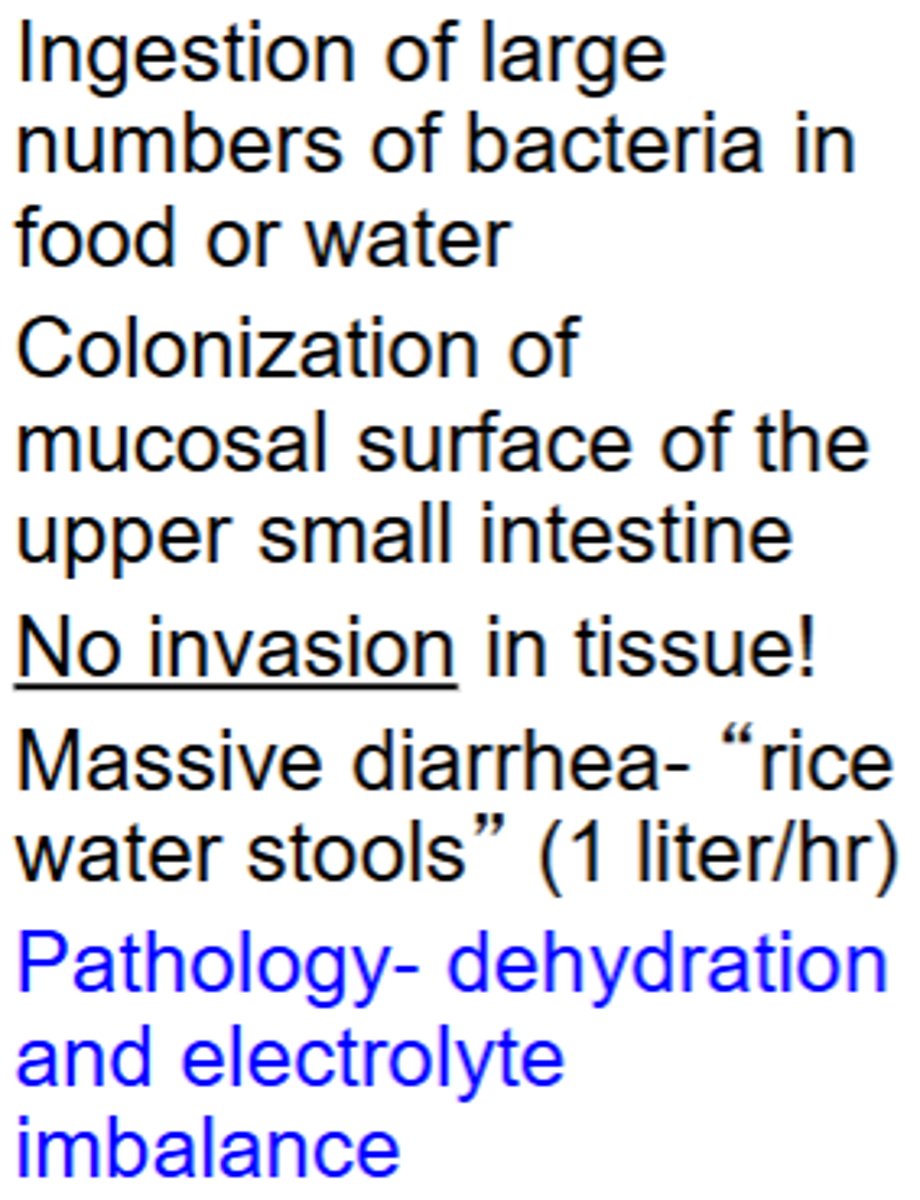
treatment of cholera
fluid replacement, orally or via IV depending on severity
describe the cholera vaccine
